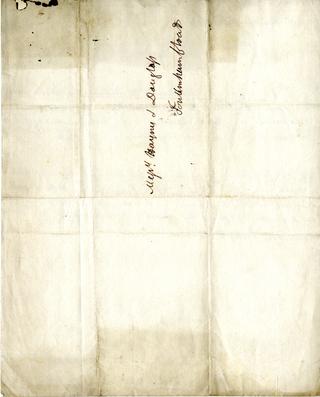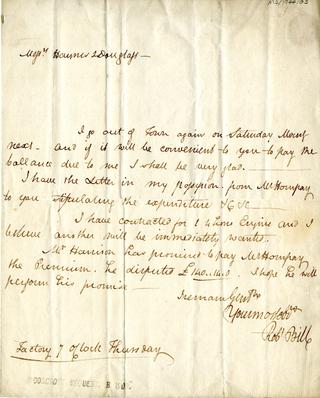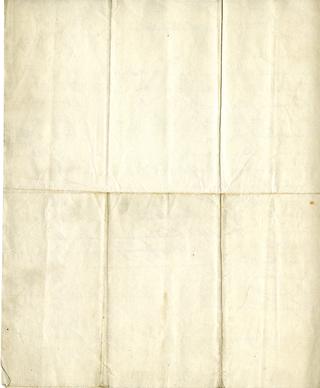
Bill, Robert 1754 - 1827
- Nationality:
- British
Robert Bill was a mechanical engineer and inventor. Born in Staffordshire to William and Mary Bill, it was initially intended for him to join the army. As a result, he did not attend university but rather left education after finish at school. Despite this he did not embark upon a military career but rather was able to use his family’s money to focus on literary pursuits and various experiments.
As part of his experimentation Bill would develop a method of circulating warm air around his house and would also install iron cylinders that were able to heat his hothouse and grapery. In addition to this he would also write a 1795 booklet on the dangers of paper currency that also mentioned a method of preserving water in iron tanks. Although he would not work on this idea further it would be utilised by the Royal Navy aboard their ships.
Later in his life Robert Bill moved to London and became involved in a company providing both gas street and house lighting. In his position he was able to use his knowledge to assist in the planning, installation and regulation of gas equipment. Despite this success he would leave the company due to a disagreement with the proprietors. Following this he would be involved in a number of different ventures including buying Andrew Vivian’s share in an 1802 patent Vivian and Richard Trevithick had taken out. In this he is often described as a nominee of Samuel Homfray, who at the time owned half the patent, and it is believed that Bill’s purchase gave Homfray a controlling interest in the patent. He would also be involved in promoting Edward Massey’s log for ships, publishing a pamphlet in 1806 that contained testimonies from various individuals who had used it. In 1811 he would patent a machine for washing cloths and in 1813 he would present a steam cooker for trails by the Royal Navy.
In the later stages of his life Bill would be involved in two naval projects. The first of these was a method he developed for producing ships masts from iron which, although would prove not to be strong enough, he believe only failed due to his instructions not followed properly. The final project that he would work on was to develop a method of hardening various types of wood that would not usually be used in ship construction. Although this was making a great deal of progress, with a vessel being authorised that made use of the process, he would not live to see it come to fruition, as he would die on 23rd September 1827.



